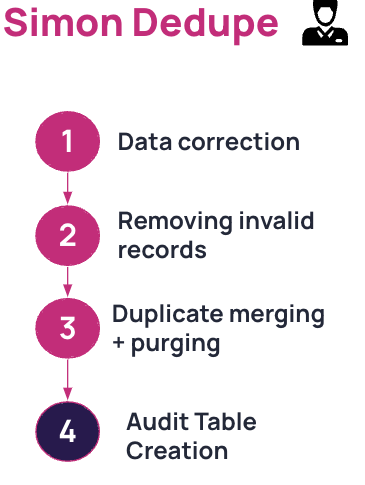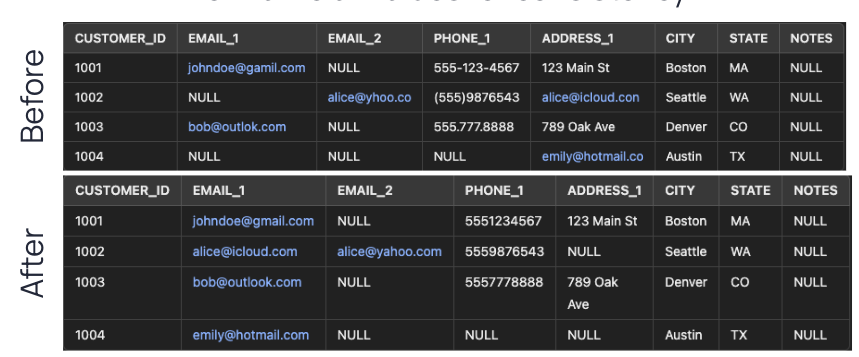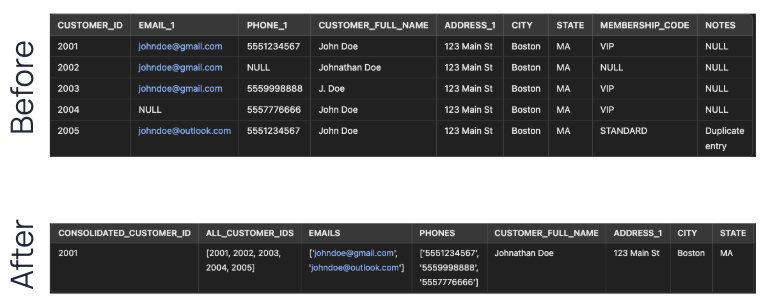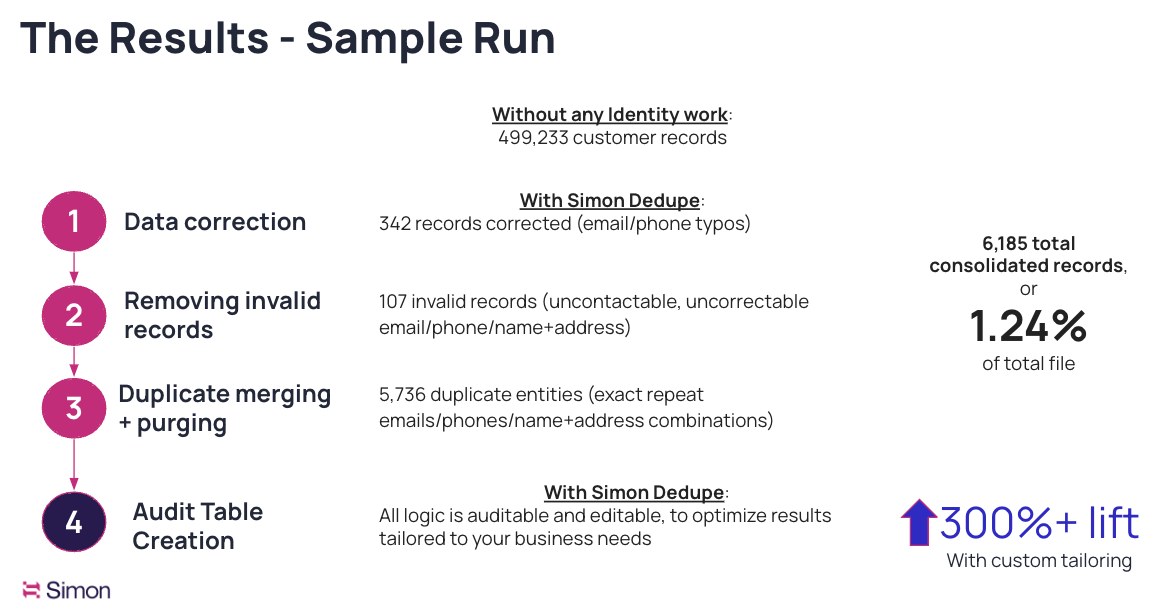Simon Dedupe
Overview
Simon Dedupe is Simon Data's in-CDW entity resolution offering, designed to help you clean and unify your data within individual sources and ensure that data is accurate, consistent, and free of duplicates. This foundational step precedes identity resolution and is crucial for maintaining high data quality, which in turn supports better decision-making and more effective marketing strategies.
Simon Dedupe is enhanced via Simon’s Identity Managed Services, and is followed downstream by Simon's composable CDP application.
What is Entity Resolution?
Entity resolution is the process of identifying and merging records that refer to the same entity within a single data source that may contain duplicates after normalization. Unlike identity resolution, which focuses specifically on individual contacts, entity resolution can apply to any definable object, including individuals, organizations, products, or locations.
Why is Entity Resolution Important?
Entity resolution is essential for any business looking to create personalized, data-driven marketing strategies. Without it, your customer data can remain fragmented, leading to incomplete or inaccurate profiles that undermine your marketing efforts. Here’s why it’s critical to get entity resolution right:
- Data Accuracy: Eliminates duplicate records and ensures that each entity is represented accurately.
- Enhanced Insights: Provides a comprehensive view of entities, facilitating better analysis and decision-making.
- Operational Efficiency: Reduces data redundancy and inconsistencies, leading to more efficient data management and operations.
- Regulatory Compliance: Ensures data integrity and helps maintain compliance with data governance regulations.
Our Process
After an Identity Assessment is performed, we get a good idea of whether detailed entity resolution will be needed for your data, and how we should approach it. We have a default process, but each step is fully transparent with SQL code provided, and we can also iterate to custom-tailor the logic to fit your specific business needs. With customer tailoring, we have seen as much as a 300% lift in consolidated records, so this is a crucial step!

Step 1: Data correction
Using industry best practices to find and correct common misspellings, move fields that were input wrong, and normalize all values for consistency

Step 2: Remove Invalid Records
Detecting fake, vulgar, or otherwise invalid customer records, and placing them in a separate table for later processing
Step 3: Duplicate merging + purging
Merging duplicate records together, tracking the identities that merged, and purging the unnecessary duplicates

Step 4: Audit Tables
These are the finished, deduplicated data tables, all the records flagged as invalid and cleaned, alongside every piece of code and business logic used to make these decisions. These are used to tweak/customize to your business needs, depending on the initial result.
Summary Report Sample

Updated 7 months ago
